- Home
- Stephen Baxter
The Science of Avatar Page 2
The Science of Avatar Read online
Page 2
And things could get a whole lot worse than that.
Climate change could stop being gradual. Some scientists predict that if the world’s natural cycles are pushed too far we could reach a “tipping point” into a sudden, much greater disaster. Among the tipping-point triggers could be the abrupt release of deposits of methane and carbon dioxide, currently trapped under permafrost layers around the rim of the Arctic Ocean and elsewhere. These vast volumes of greenhouse gases would make global warming suddenly accelerate.
Another much-discussed tipping point is the possible collapse of the ocean current known as the Gulf Stream, which brings warm water (and air) to the north Atlantic. If this were to fail, coastal regions, including the east coast U.S., Britain and Scandinavia, could suffer a dramatic and sudden cooling. This scenario was (over) dramatised in the movie The Day After Tomorrow (2004). And it may have happened in the real world, triggering the “Younger Dryas” episode beginning around thirteen thousand years ago, in which the world’s emergence from the last Ice Age was interrupted by a thousand-year reversion back to glacial conditions.
A 2003 report commissioned by the Pentagon imagined sudden climate collapse triggered by something like the Younger Dryas. The consequence would be a sharp reduction in the world’s “carrying capacity,” its ability to feed us all. Amid the subsequent wars, droughts and huge population movements there would be a collapse of states and federations like the European Union, and a breakdown of international order. This was an extreme scenario, but then it’s the job of defence departments like the Pentagon to dream up and prepare for the worst case.
The very bleakest future predictions of all make grim reading. In the 1970s James Lovelock devised the famous theory of “Gaia,” our world seen as a network of flows of energy and matter, “a dynamic physiological system that has kept our planet fit for life for more than three billion years” (and perhaps Gaia has a parallel in Pandora’s Eywa; see Chapter 29). Now, Lovelock says in his latest book The Revenge of Gaia, “The world is fighting back… The bell has started tolling to mark our ending… Only a handful of the teeming billions now alive will survive.”
Is there anything we can do about this?
For a start we might go beyond the “green” activities already prevalent in the modern world: recycling, saving energy, conserving the remaining wild.
Perhaps we could rescue threatened portions of the biosphere itself. There are already over a thousand gene banks around the world, storing millions of plant seeds. Animals are being “stored” as frozen tissue samples, for example at the Frozen Zoo at San Diego Zoo in California, in the hope that if all else fails these creatures could be revived as clones some day. The Zoological Society of London is even considering a bank of frozen corals. And some scientists are considering how to preserve ecosystems on a larger scale—whole landscapes, perhaps—in order to allow evolution a large enough arena in which to continue.
But there are gentler possibilities. American environmentalist Paul Wapner argues that we should soften the lines between “us” and “nature.” For example, Wapner suggests, instead of building a fence to divide forest from city, we should create zones of selective logging. Forests would gradually shade into suburbs that would be intentionally wildlife-friendly, and there would be migration corridors for wildlife and plenty of exposed ground. There might be no wilderness, but the suburbs would be wilder, and we would all become wardens of the wild things around us. Ecologist Dickson Despommier has another interesting proposal: we should raise crops and animals in the cities, in “vertical farms,” large high-rise buildings. Then we could afford to allow the countryside to return to the wild—and we would drastically cut the cost of transporting food.
But if the situation continues to deteriorate, such small-scale initiatives might not be enough. We can imagine frantic efforts to put Gaia back together again on a much larger scale. This is geoengineering: rebuilding the Earth.
Geoengineering solutions can be vast in scale, but are generally based on two simple principles. Earth intercepts heat from the sun; and an excess of carbon dioxide in the air traps that heat. So to reduce the retained heat you either reduce the amount of solar energy the planet soaks up in the first place, by reflecting it away—“albedo manipulation”—or you take carbon dioxide out of the air—“carbon sequestration.”
One sequestration method is to liquefy atmospheric carbon dioxide and pump it under pressure into deep rock layers, or into the deep sea. (It was in 1970s studies of solutions like this that the term “geoengineering” was first coined.) This is already being done, for instance at natural gas plants in Norway. The challenge is not to generate more heat in the process than you’re saving by removing the carbon dioxide.
On the other hand the most ambitious albedo-manipulation schemes are to assemble immense solar reflectors in space. In 1929 the German-Hungarian space visionary Hermann Oberth suggested using huge orbiting mirrors to reflect sunlight to the polar regions, to alleviate the Arctic night. The Russians actually tested a twenty-metre space mirror in 1993, unfolded in Earth orbit from the Mir space station. The idea of using space mirrors to deflect light from an overheating Earth has been explored by American energy analysts. There are less dramatic schemes, such as using naval guns to fire aerosol particles into the high atmosphere, and thus to screen out the sunlight. Other possibilities have been explored in science fiction. Kim Stanley Robinson’s Forty Signs of Rain and its sequels (from 2004) dramatised the collapse and artificial restarting of the Gulf Stream, and in my own Transcendent (2005) I had engineers stabilise the methane deposits at the poles.
Many people instinctively recoil from such drastic tinkering with the planet. It feels hubristic, arrogant. In our myths only the gods fooled around with the weather, like the deities in Homer’s Odyssey who created storms to blow Odysseus around the Aegean Sea. And the science is definitely uncertain. As I said, Lovelock’s “Gaia” hypothesis depicts the Earth as a complex web of interlocking feedback processes. Until we understand how this web works it’s hard to be sure if our meddling will make things better, or worse. There is even a danger that a geoengineering solution would actually encourage us to continue to commit our biospheric sins in the mistaken belief that we could clear things up later.
However, there is plenty of serious talk about geoengineering. In 2009 Britain’s prestigious Royal Society produced a major report on the “science, governance and uncertainty” of geoengineering, and in 2011 the idea was debated by the highly influential Intergovernmental Panel on Climate Change (IPCC), the UN’s climate science body.
Your optimism in our ability to handle something like geoengineering might be dented if you read some of the fractious arguments being waged today in public forums about climate change, but at least we are talking. Perhaps even the arguments are a sign of a (slowly) emerging global consciousness, of how we’re groping towards becoming a mature planetary civilisation. Certainly if things deteriorate there might come a point where we have no choice but to try drastic solutions.
But perhaps, in the end, if things got bad enough, a new and shocking paradigm would emerge: let it die.
With enough power and raw materials I suppose it would be possible for mankind, or a large chunk of it, to survive even on a world with little or no ecology left at all. It might be like colonising an alien world, with domes over the cities, and gigantic air-scrubbing machines, and food factories churning out processed blue-green algae. The tremendous energies that had been devoted to failed geoengineering efforts could now be devoted to artificial life-support systems for a planet.
I wouldn’t underestimate what it would take to replace the lost “services” of the ecology. Consider the humble tree, for example—the tree, so central to the Na’vi’s culture and lifestyle. Trees prevent land erosion, they provide a weather-sheltered ecosystem in and under their foliage, they help maintain the atmosphere by producing oxygen and reducing carbon dioxide, they provide crops from apples to rubber—and, when
they die, they give us a remarkably flexible building material, in wood. There are thought to be some four hundred billion of these giant servants on the planet (see Chapter 29). We would have to spend some serious money to build mechanical equivalents of all that. (And if we did, perhaps the last trees would end up in a tree museum, as in the Joni Mitchell song.)
How would it be to live on such a world? The fragmentary visions in Avatar give us a hint. There have been all-city planets in science fiction, such as in Isaac Asimov’s 1954 novel The Caves of Steel, which depicted a world of claustrophobic metal-walled corridors. And consider the dismal dead-Earth vision of Cormac McCarthy’s novel The Road.
I imagine a world of vast mines and huge engines, of foul, smog-choked air and dead oceans, where every sip of water and breath of air has to be passed through a filter first. (Maybe the exopacks used on Pandora are based on technology developed to survive on Earth.) I imagine a world still flaring with war over its remaining resources, just as in Avatar. I imagine a world of intense control and surveillance, mediated by the super-powerful artificial minds of the future (see Chapter 19). I imagine a planet like a vast shanty town, where the plight of the poor and the vulnerable would be dreadful.
And we would miss mother Earth badly. Already we are disconnected from the ecology that nurtured us, and don’t fit the world around us. Our brains are still hardwired to avoid long extinct predators, which is why our bodies are flooded with adrenaline in response to everyday hassles, as if they were lethal threats. This is the “pronghorn principle.” The pronghorn is a North American antelope-like creature that runs ridiculously fast, a now useless ability it evolved to flee the vanished predators that once hunted it. We would be desperately unhappy on a dead Earth, and we might not even understand why.
For better or worse however this does seem to be the sort of world into which Jake Sully was born—and a sense of what we’d have lost is dramatised in Jake’s first wondrous reaction to the living world of Pandora. But our world isn’t like this yet.
3
GREEN SHOOTS OF HOPE
We always have to be aware that Avatar is a movie, and what we see onscreen is there primarily to serve a narrative purpose. Avatar is a movie of hopeful awakenings, from Jake Sully emerging from cryosleep (suspended animation) in orbit around a new world, to the movie’s very last frame when he makes a final wakening as a Na’vi, fully committed to his new world. But hopeful awakenings are much more effective, for story purposes, if you have a nightmare to wake up from.
There’s nothing new in dark portrayals of the future. My generation, born in the fifties, was brought up with the Cold War, a mind-numbing stalemate that could have triggered a mass nuclear war: a future terminated by a wall of blinding light. Western culture has a deep-rooted expectation of apocalypse just around the corner that seems to date back at least as far as the Book of Revelation. We’re always fearing the worst; it’s just that the worst we can imagine changes with time.
Perhaps apocalyptic thinking is valuable, in some circumstances. Maybe our habitual pessimism about the future is a kind of folk memory, a grandmother instinct warning us not to be complacent, to make us expectant of drastic future change, as we have experienced change in the past (such as the Ice Ages). None of this minimises the real threat posed by such problems as climate change. But a recognition of our habit of apocalyptic thinking casts a clearer perspective on our hopes and fears.
And as regards the near future, maybe we’ve still got time to avert the green apocalypse.
I doubt we really could kill off our “mother.” I’m lucky enough to live in a rural community in the north of England. Looking out of my window as I write I can see “nature”: hills, a river, forests, fields. But in fact almost everything I see save for the basic shape of the landscape is artificial, made that way by human intervention, and almost all of it is less than two centuries old. The green I see is mostly crops, or grass for the sheep, or the pine trees of the managed forests. But the wild creatures persist, at the edges: in the hedgerows, underground, at the coast, in the river valleys, the birds in the air.
It’s the same even in the heart of our greatest cities. The city of Pripyat was built to house nuclear workers from Chernobyl, and was abandoned after the disaster. After just a couple of decades its open spaces were green, and the paving stones were so smashed and lifted by tree roots they looked as if they had been through an earthquake.
Gaia has proven pretty resilient in the face of mega-disasters such as the impact of asteroids, like the one that knocked out the dinosaurs sixty-five million years ago. The daddy of all extinction events, the “end-Permian” catastrophe possibly triggered by eruptions in Siberia a quarter of a billion years ago, nearly ended multicelled life on Earth altogether. But life, though much depleted, made it even through the end-Permian, and the grand story of recovery and evolution began again.
Compared to such horror shows our feeble efforts at “ecocide” really don’t amount to much. For example we’ve barely touched the hardy old life forms believed to live in the “deep hot biosphere,” inside the rocks, kilometres down beneath our feet (see Chapter 22). Even if we blasted off the topsoil and irradiated the oceans, those ancient survivors would some day emerge to begin the story of life once more. It is a kind of cold comfort that if we were to disappear tomorrow the wild would take back a recovering world remarkably quickly.
There’s no doubt we face a complex and challenging near future. But, as the example of the ozone layer recovery shows (Chapter 1), we are capable of facing up to problems on a global scale, and resolving them. I think we’ll survive the green apocalypse, chastened and changed perhaps, and by the time those now young grow old, their children will have found something entirely new to worry about.
But we may need the resources of other worlds to save this one.
PART TWO
RDA
“Killing the indigenous looks bad, but there’s one thing shareholders hate more than bad press—and that’s a bad quarterly statement.”
—Parker Selfridge
4
DREAM WORLDS
The Resources Development Administration (RDA) is a mighty impressive organisation, judging by what we see of it in Avatar.
Consider its competences. It mounts interstellar missions on a huge scale, transporting and building vast industrial and military infrastructures. It mines an alien world. It wages war against the natives. It brings resources back to Earth—and it turns a profit in doing so.
RDA came about because of the discovery of unobtanium on Pandora. After telescopes in the solar system discovered planets of the nearest star Alpha Centauri (see Chapter 13), with Pandora particularly showing tantalising hints of life and strange magnetic effects, two unmanned spacecraft were sent to the system, using prototype versions of the technologies that would one day power Venture Star (see Part Three). From Pandora, landers sent back images of the floating rock masses that would become known as the Hallelujah Mountains, and the landers sampled an “unidentifiable mineral” (later called unobtanium) that seemed to be involved in the exotic physics that was keeping those mountains afloat (see Chapters 15 and 16).
The potential for industrial development, and huge profits, was immediately obvious. Corporations and governments quickly formed the Resources Development Administration, an international quasi-governmental consortium, to manage the development of resources from Pandora. RDA was to have complete control over operations on Pandora, but is accountable to shareholders (as administrator Parker Selfridge is all too aware), is limited by treaty in its military operations—no weapons of mass destruction—and is obliged to work on Pandora “for the good of all mankind.”
And then a blue face was seen peering intently into one of the landers’ cameras, and things got complicated…
RDA’s skills wouldn’t have come out of nowhere. Before mankind could launch an interstellar mining operation, governments and corporations would have developed off-Earth operations on a sm
aller scale, starting with the worlds of our own solar system, feeding a resource-hungry Earth—and all the while making a fat profit in the process. What’s interesting about that is, while we’re not likely to see humans reach the worlds of other stars in our lifetimes, we could well get to see proto-RDAs exploiting the worlds of our solar system.
And maybe that will start with another small step on mankind’s nearest neighbour, the moon. A small step, followed by the chewing of a drill-bit in the lunar dirt.
I once met a man who, like Jake Sully, journeyed through space to another world. He travelled only about a light-second, not four light years. The trip took him three days, not six years. He didn’t need suspended animation, though on the way back, exhausted, he did sleep a lot. But, like Jake, he too walked on a low-gravity world. His name is Charles Duke, and he flew to the moon in 1972 aboard Apollo 16.
I interviewed Duke over lunch in a hotel in Bond Street, London. He told me how the handling of the Apollo lunar lander reminded him of the fighter planes he flew earlier in his career: “It was like being a rough acrobatic pilot. Oh, great ride…” Duke’s low-gravity moonwalks were actually typical of our near-future experience in space. Aside from the four gas giants, Earth is the largest world in the solar system; anywhere humans can land in the sun’s family we’ll find the gravity lower, just as on Pandora.
Then, during his journey home, with the spacecraft suspended between Earth and moon, Charlie Duke assisted in a space walk to retrieve instrument records. “As I floated out, the Earth was off to the right, probably about a two o’clock low, real low. I could see it beyond the hatch, beyond the Service Module. And it was just a little thin sliver of blue and white. And then I spun around this way and directly behind me there was this enormous full moon, and it was, I mean it was overwhelming, that kind of feeling. And you could see Descartes, you could see Tranquillity, all the major features, and it just felt you could reach out and touch ’em. No sensation of motion at all. The sun was up above my eye line but it’s so bright you don’t look at it. And everything else was just black…” He mimed for me his spacecraft, suspended between Earth and moon and sun. What an experience! Even a moonwalk would have some familiar features—ground below your feet, a sky above, a horizon. Duke’s walk between the worlds was something no human being had enjoyed before Apollo, in all our evolutionary experience—which is one reason why, in my opinion, we should continue to send humans into space.

 The Martian in the Wood
The Martian in the Wood THE H-BOMB GIRL
THE H-BOMB GIRL World Engine
World Engine Titan n-2
Titan n-2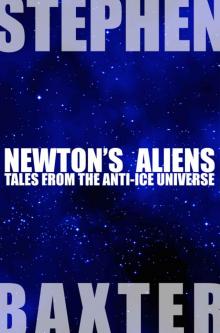 Newton's Aliens: Tales From the Anti-Ice Universe
Newton's Aliens: Tales From the Anti-Ice Universe Exultant
Exultant Manifold: Origin
Manifold: Origin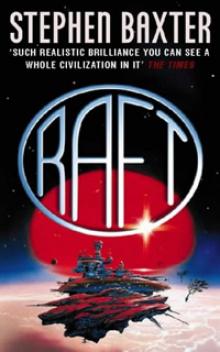 Raft xs-1
Raft xs-1 Bronze Summer n-2
Bronze Summer n-2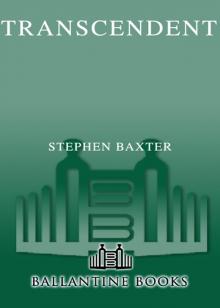 Transcendent
Transcendent Stone Spring
Stone Spring Coalescent
Coalescent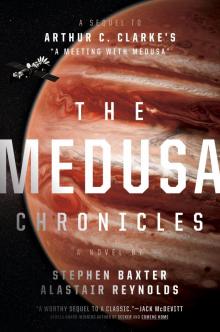 The Medusa Chronicles
The Medusa Chronicles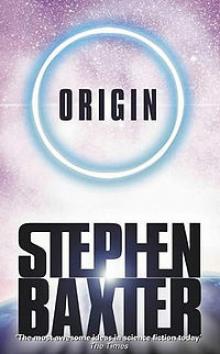 Origin m-3
Origin m-3 Silverhair tm-1
Silverhair tm-1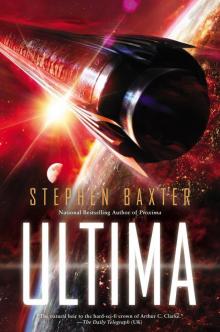 Ultima
Ultima Voyage n-1
Voyage n-1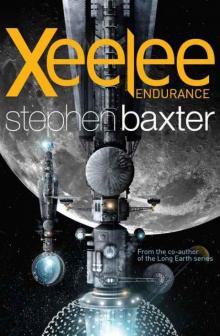 Xeelee: Endurance
Xeelee: Endurance Space m-2
Space m-2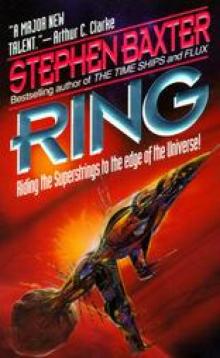 Ring xs-4
Ring xs-4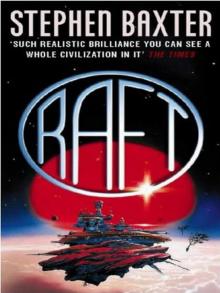 Raft
Raft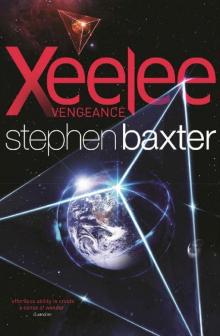 Xeelee: Vengeance
Xeelee: Vengeance Iron Winter n-3
Iron Winter n-3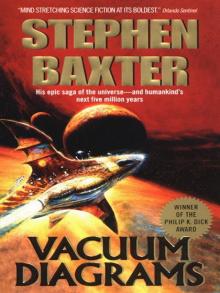 Vacuum Diagrams
Vacuum Diagrams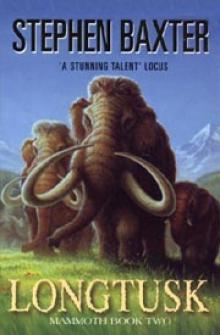 Longtusk tm-2
Longtusk tm-2 Proxima
Proxima Evolution
Evolution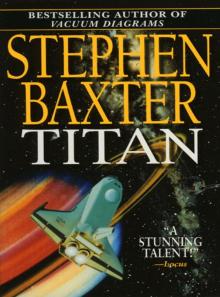 Titan
Titan Last and First Contacts (Imaginings)
Last and First Contacts (Imaginings) Emperor
Emperor The Massacre of Mankind
The Massacre of Mankind Starfall
Starfall Doctor Who - The Wheel of Ice
Doctor Who - The Wheel of Ice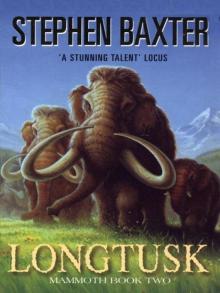 Longtusk
Longtusk Silverhair
Silverhair Conqueror tt-2
Conqueror tt-2 Flood
Flood Flood f-1
Flood f-1 Emperor tt-1
Emperor tt-1 Moonseed
Moonseed Conqueror
Conqueror Timelike Infinity xs-2
Timelike Infinity xs-2 The Ghost Pit
The Ghost Pit Xeelee: An Omnibus: Raft, Timelike Infinity, Flux, Ring
Xeelee: An Omnibus: Raft, Timelike Infinity, Flux, Ring Weaver tt-4
Weaver tt-4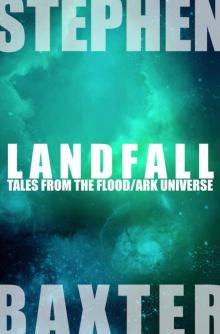 Landfall: Tales From the Flood/Ark Universe
Landfall: Tales From the Flood/Ark Universe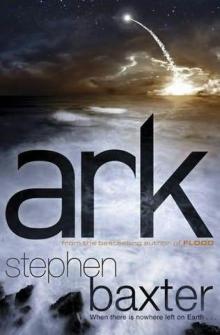 Ark
Ark Emperor: Time’s Tapestry Book One
Emperor: Time’s Tapestry Book One Space
Space Icebones
Icebones Manifold: Space
Manifold: Space Navigator
Navigator Obelisk
Obelisk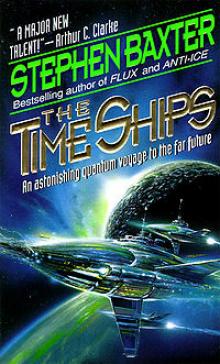 The Time Ships
The Time Ships Bronze Summer
Bronze Summer Resplendent
Resplendent Moonseed n-3
Moonseed n-3 Flux xs-3
Flux xs-3 Transcendent dc-3
Transcendent dc-3 Icebones tm-3
Icebones tm-3 Phase Space
Phase Space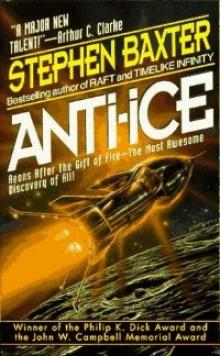 Anti-Ice
Anti-Ice Weaver
Weaver Voyage
Voyage Time m-1
Time m-1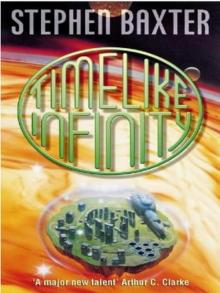 Timelike Infinity
Timelike Infinity Exultant dc-2
Exultant dc-2 Coalescent dc-1
Coalescent dc-1 Navigator tt-3
Navigator tt-3